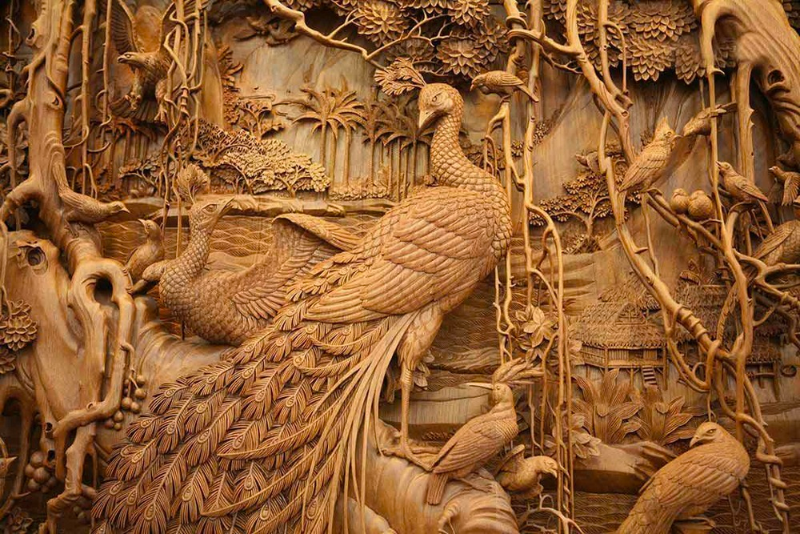Monabat Kari (Munabat Kari) is one of the most important Iranian arts and handicrafts and is the art of creating patterns and designs on the surface of wood (or stone). The word Monabat is derived from the word “Nabaat” which means planting and growing, as creating floral motifs resembles the growth of pants.
what is Monabat Kari?
The main material in Monabat Kari is wood and the more compact the texture of the wood, the better and more durable the Monabat craft, and walnut tree wood, beechwood, plane tree wood, and pear wood are the best types of wood for creating a Monabat craft. Since walnut is a plant that is cultivated in most parts of Iran and has a dense texture and shiny beautiful color, it is widely used in producing wooden crafts in Iran. Also, the plane tree is one of the most abundant trees in Tehran and has a beautiful reddish-brown color. The stunning art of Monabat Kari is used for ornamenting different objects from the door of historical and fancy houses to jewelry boxes, home décor accessories, and dishes, so it is one of the best things that you can buy as a souvenir in Iran when visiting this country.

The history of Monabat Kari
Just like other arts and handicrafts that men have practiced throughout history, the exact date of the invention of Monabat Kari is not known, but what can be taken for granted is that since wood is known as the most abundant material in the environment, wooden objects are among the very first crafts that men have created and used as tools, dishes, and material for building houses. According to documents and evidence, the antiquity of Monabat Kari in Iran traces back to 1500 years ago and historians claim that Iranians practiced this art before the Sassanid era, however, no sample is left from that age. It is believed that the cap of the pillars of Persepolis (the glorious capital of Achaemenids dating back to 518 BC.) was made of wood and ornamented with Monabat.

The oldest sample of Monabat Kari which is still available is the great door of Jame Atiq Mosque of Shiraz which was built during the reign of Amr o Leith Saffari in the 3rd Hijri century. This door is made with Tabrizi wood and covered with walnut tree wood ornamented with an eye-catching polygonal pattern. The second oldest sample of Monabat in Iran is another wooden façade related to the 4th Hijri century with Kufic calligraphies carved on it. The brilliant skill of Iranian artists in creating Monabat crafts can be witnessed in creating objects related to Islam like Manbar (seats in mosques) and Rahl (wooden objects for holding up Quran books).


